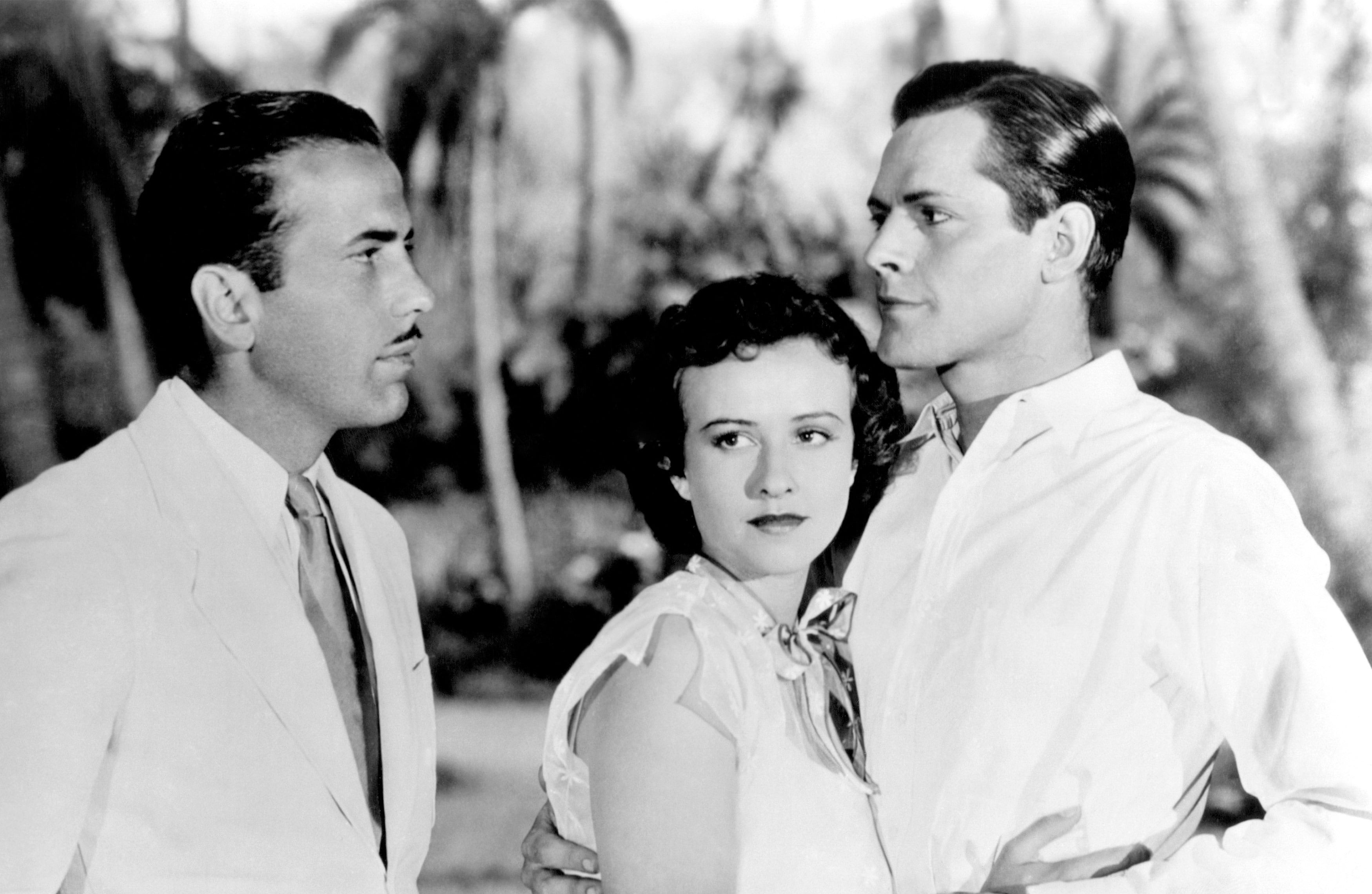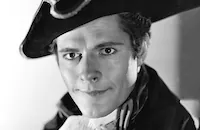Isle of Fury

Brief Synopsis
Cast & Crew
Frank Mcdonald
Humphrey Bogart
Margaret Lindsay
Donald Woods
E. E. Clive
Paul Graetz
Film Details
Technical Specs

Synopsis
The wedding of Val Stevens and Lucille Gordon on a small Pacific island is interrupted by a shipwreck during a storm. The wedding resumes, but immediately after the exchange of vows, Val rushes off to rescue Eric Blake and Capt. Deever, who were aboard the ship. Dr. Hardy, the island's doctor, is suspicious of their presence near the island which is not in any regular traffic pattern, and questions Eric closely. Later, he is the first to realize that Eric and Lucille are falling in love. When Val's pearl divers refuse to dive because they are afraid of something in the water, Dr. Hardy suggests that Eric accompany Val to another island to straighten out the problem, hoping to prevent Eric and Lucille from staying alone together. Lucille, however, decides to travel with the two men. On the island, Val dons a diving suit and, to demonstrate the safety of the waters, plunges into the ocean at the spot where several divers have disappeared. He encounters an enormous octopus and battles with it. During the struggle, his lines come loose and Eric rescues him, killing the octopus. Now that the octopus is dead, the divers return to work. Eric rescues Val a second time when two natives attempt to steal the pearls and Val gratefully invites Eric to join his business, but Eric, who has asked Lucille to leave Val, announces that he is leaving the island. Before he goes, Eric is told by Dr. Hardy that he knows he has come to find Val who committed a murder in the United States. Capt. Deever, however, believes that Eric is the wanted man and tells Val that he is going to turn him in for the reward. Val angrily throws him out of the room and Deever tells him that Eric is making love to Lucille. Val runs home to find Eric and Lucille talking. When Eric confesses that he was hunting for Val, Deever overhears the conversation and, realizing he has been hunting the wrong man, breaks in and holds Val at gunpoint. Val is saved when Lucille's grandfather shoots Deever. Understanding that Lucille intends to stay with Val, Eric leaves the island to report that the man he was hunting is dead.

Director
Frank Mcdonald
Cast

Humphrey Bogart

Margaret Lindsay

Donald Woods

E. E. Clive
Paul Graetz
Gordon Hart
George Regas
Sidney Bracey
Tetsu Komai
Miki Morita
Houseley Stevenson
Frank Lackteen
George Piltz
Crew

Film Details
Technical Specs

Articles
Isle of Fury
Typecasting was one means of assuring return audiences, and Bogart was already becoming a reliable heavy, but that didn't mean he never had the opportunity to play a character outside of his usual box. In Isle of Fury (1936), he gets to play the hero, albeit someone with a criminal past, but with unexpectedly exotic and romantic trappings. Did this change of pace please the actor? Obviously it did not since in later years Bogart denied Isle of Fury was ever part of his repertoire. But here he is as a mustachioed South Seas pearl diver battling the most ridiculous-looking octopus ever put on screen.
Bogart plays Valentine "Val" Stevens, newly wed to Lucille Gordon when a shipwreck occurs near their Pacific island home. Val rescues two men, one of whom, Eric Blake, becomes both his friend and his rival for Lucille's love. Little does Val know, however, that Eric has actually been sent to arrest him for the crime he was accused of years before. The plot, then, offers opportunities to incorporate elements of mystery, adventure and action, and romantic melodrama (the theatrical trailer touted "the strangest love triangle ever filmed!").
The screenplay, under the working title "Three in Eden," was adapted by Robert Hardy Andrews and William Jacobs (future producer of a string of Doris Day hits for the studio in the early 50s) from The Narrow Corner, a short novel by W. Somerset Maugham. The story was filmed once before by Warner Brothers in 1933 under its original title (which was more faithful to Maugham's original novel), and starred Douglas Fairbanks, Jr. and Ralph Bellamy.
Isle of Fury is among the least effective of the adaptations taken from Maugham's work. Far more worthy of the top critical and commercial reception given them were such Maugham film adaptations as Of Human Bondage (1934), The Letter (1940), The Painted Veil (1934, 2006), Being Julia (2004, based on Theatre), and various versions of the story about "scarlet woman" Sadie Thompson, played by Gloria Swanson (1928), Joan Crawford (1932), and Rita Hayworth (1953).
Director Frank McDonald was a reliable B unit craftsman at the studio, handling the popular Torchy Blane mystery-comedy series before moving over to Republic to direct several Roy Rogers pictures of the 1940s. Like many B movie directors of Hollywood's Golden Age, he finished out his career as a successful television director.
Some months prior to this picture, Margaret Lindsay was working on the film Murder by an Aristocrat (1936), also directed by Frank McDonald; however, she was so distraught over the mysterious death of her good friend Thelma Todd that she bowed out of that production. A lesbian who was relatively open about her sexuality at a time when most actors went to great pains to hide it, Lindsay's career never really reached the level of stardom. She did, however, have a long run in B productions and occasional noteworthy supporting roles in major releases such as Jezebel (1938), Scarlet Street (1945), and Please Don't Eat the Daisies (1960).
The year after making Isle of Fury things began looking up considerably for Bogart, with high-profile roles in Marked Woman, Kid Galahad both with Bette Davis and Dead End.
Director: Frank McDonald
Producer: Bryan Foy (uncredited)
Screenplay: Robert Hardy Andrews, William Jacobs, based on the novel The Narrow Corner by W. Somerset Maugham
Cinematography: Frank Good
Editing: Warren Low
Art Direction: Esdras Hartley
Cast: Humphrey Bogart (Val Stevens), Margaret Lindsay (Lucille), Donald Woods (Eric Blake), E.E. Clive (Dr. Hardy), Paul Graetz (Capt. Deever).
BW-61m.
by Rob Nixon

Isle of Fury
Quotes
Trivia
Notes
W. Somerset Maugham's story was published serially in Hearst's International-Cosmopolitan (Oct-December 1932). The working title of the film was Three in Eden. Modern sources list the following credits Music Howard Jackson, Special Effects: Willard Van Enger, H.F. Koenekamp, and Sound rec: Charles Lang. The Maugham novel was also the source for the 1933 Warner Bros. film The Narrow Corner (see below).

Miscellaneous Notes
Released in United States 1936
Released in United States 1936














